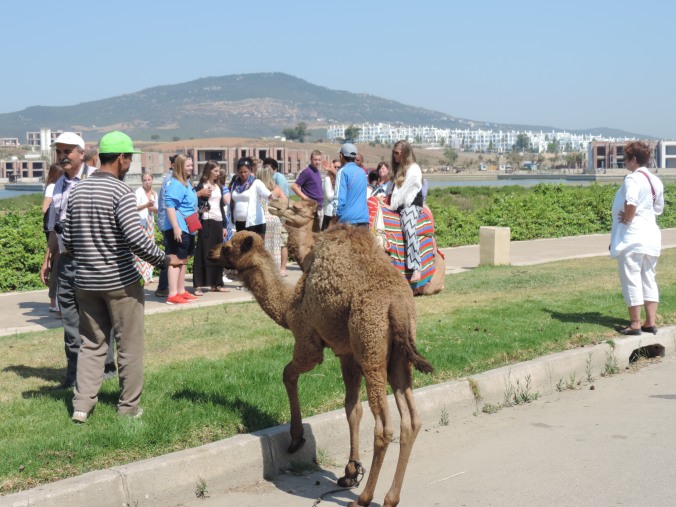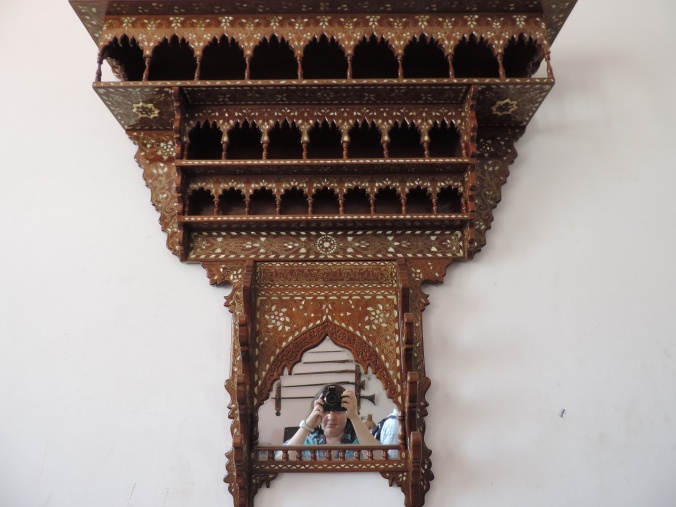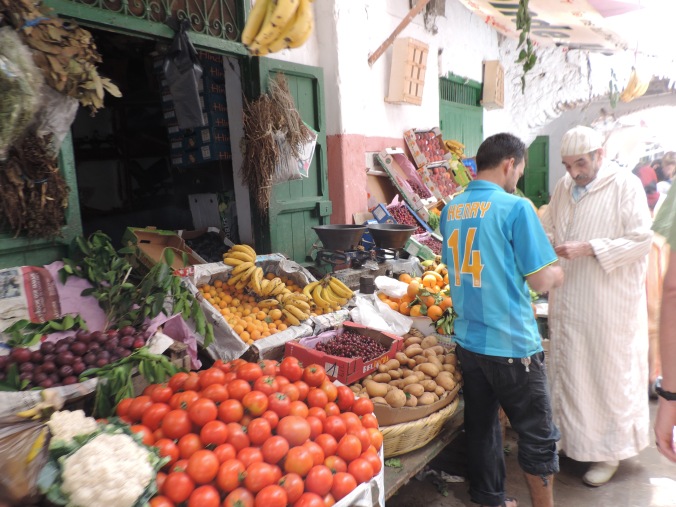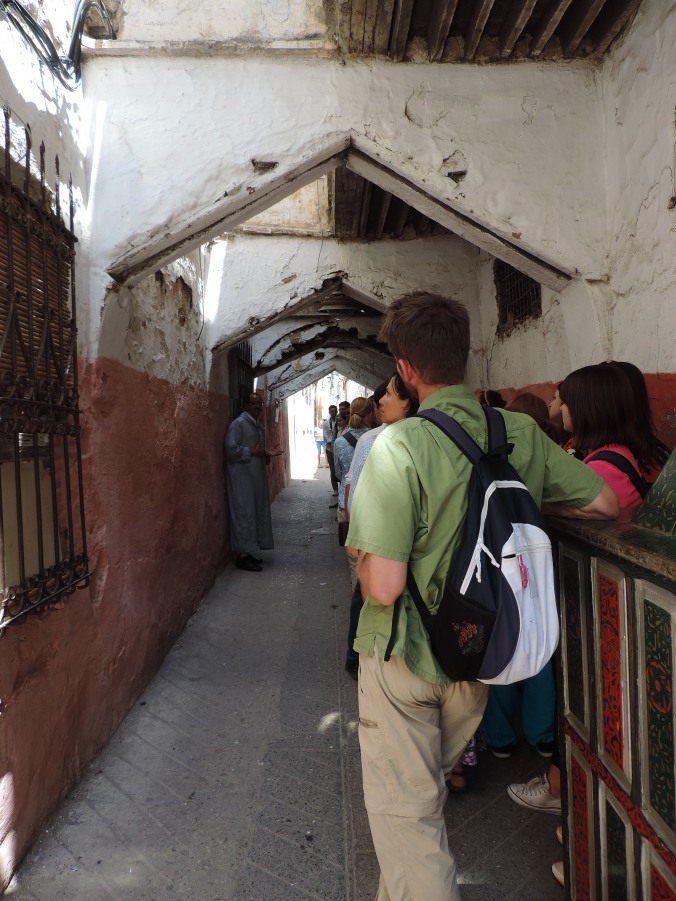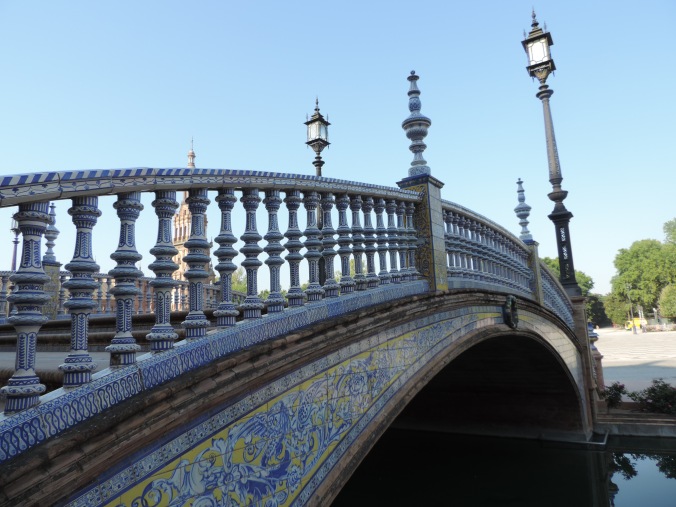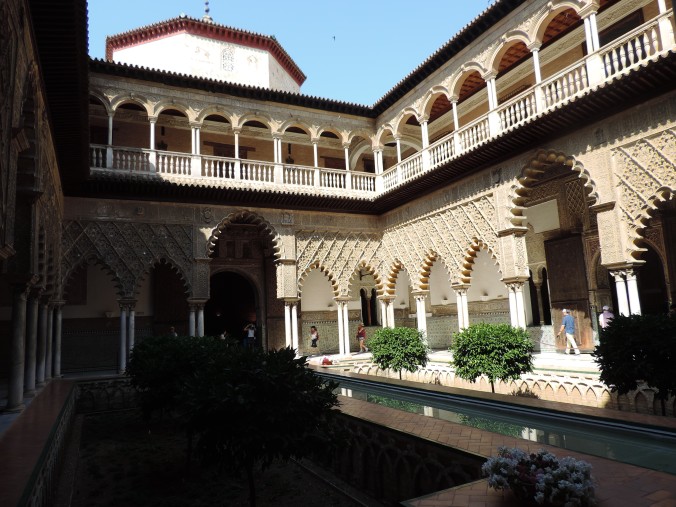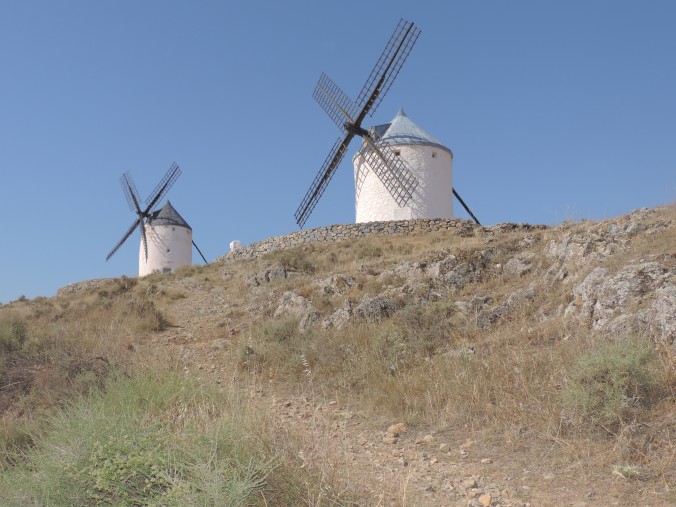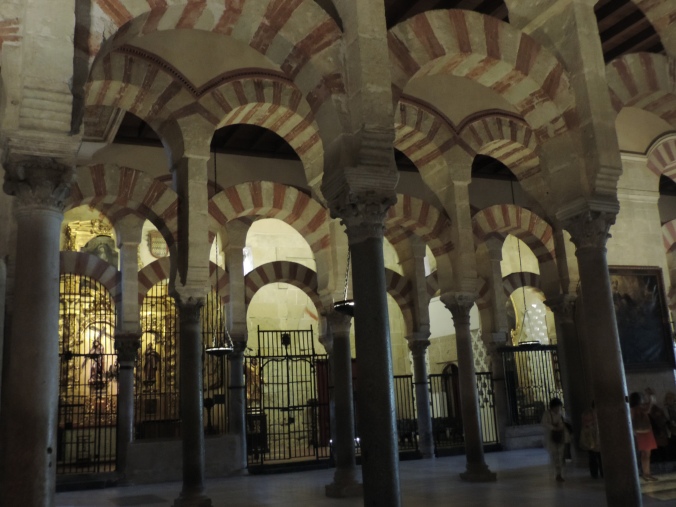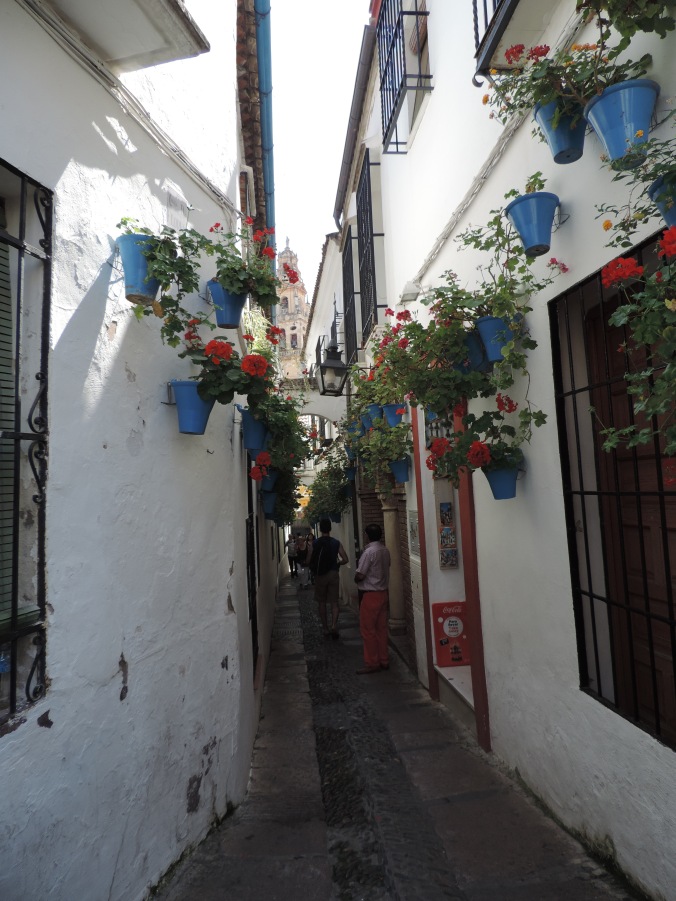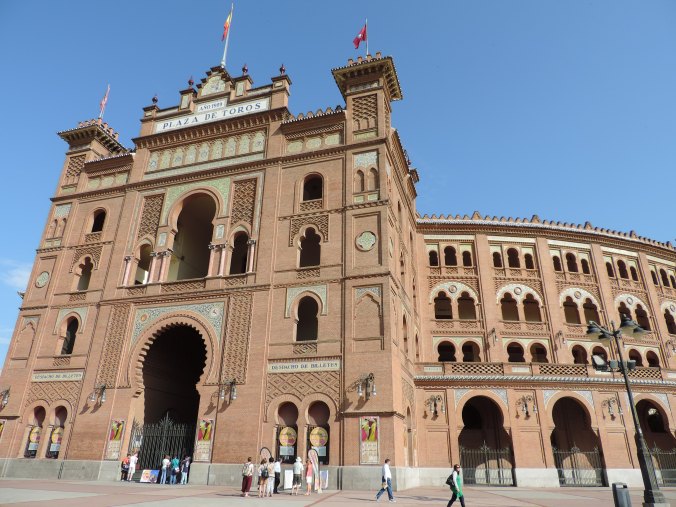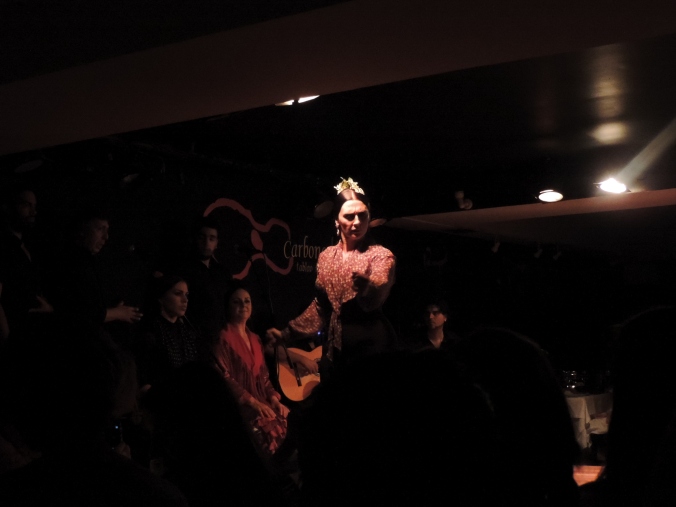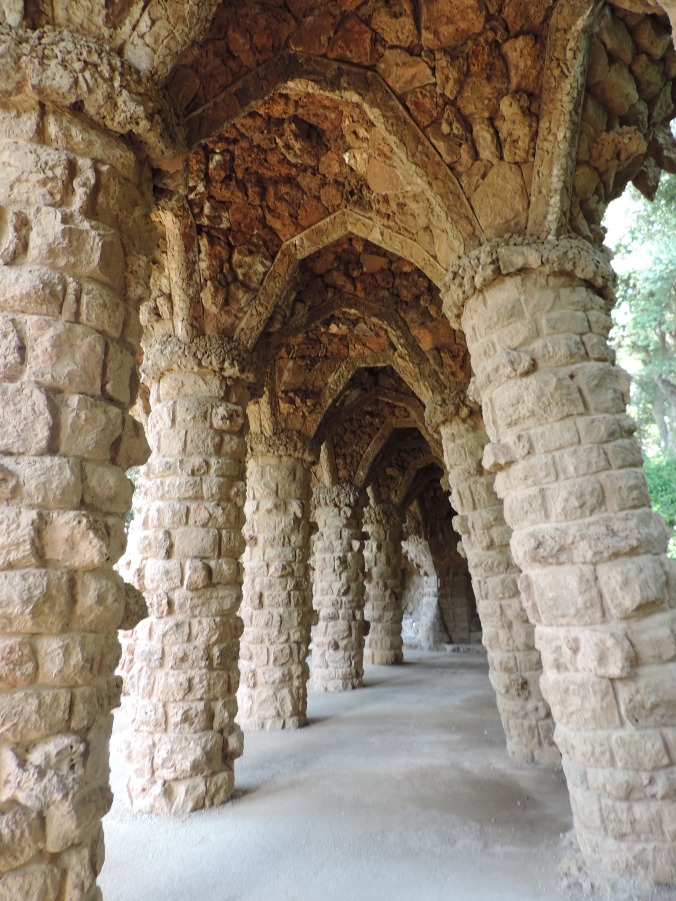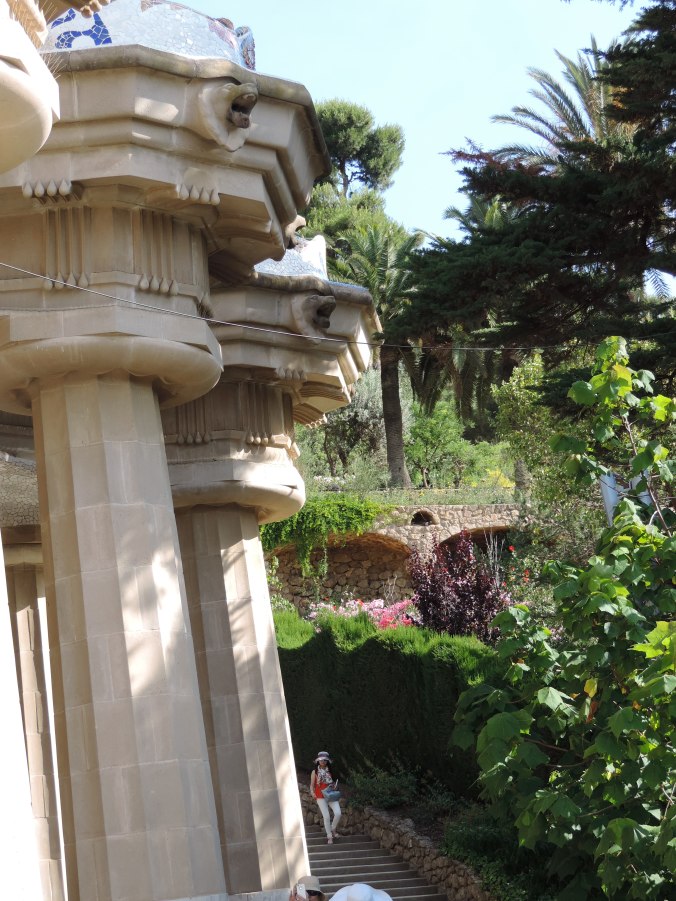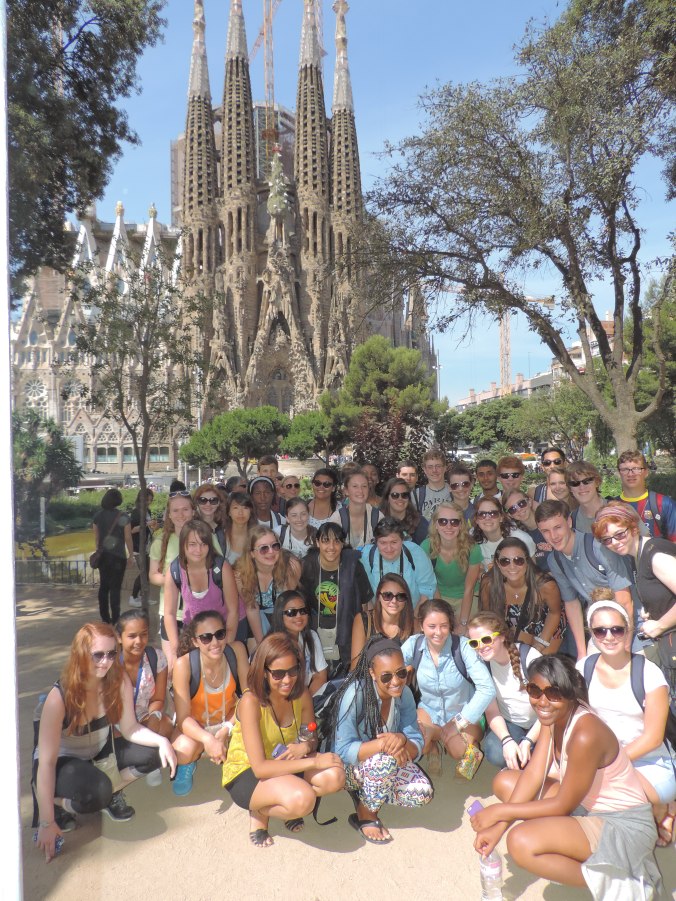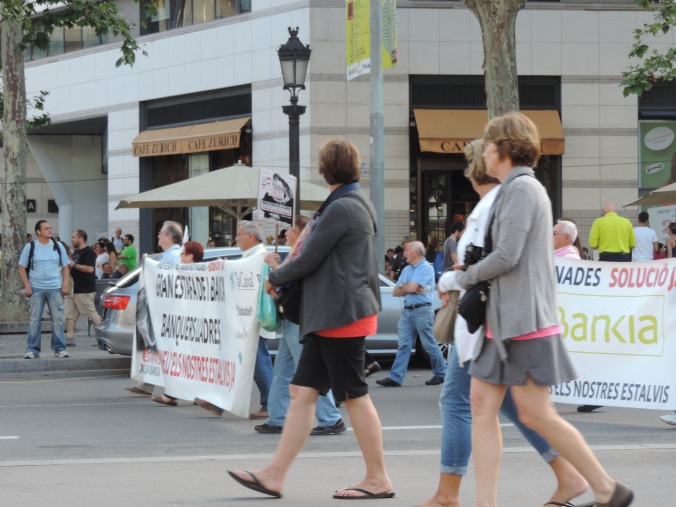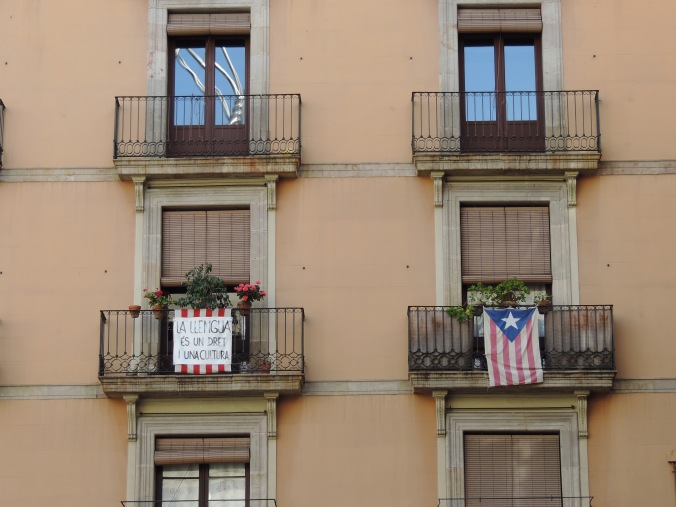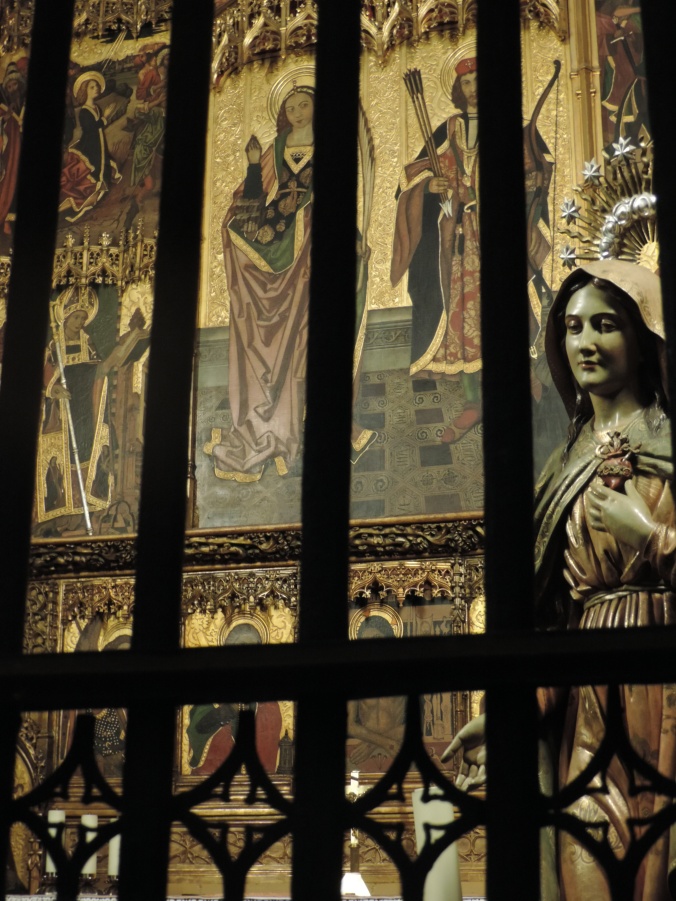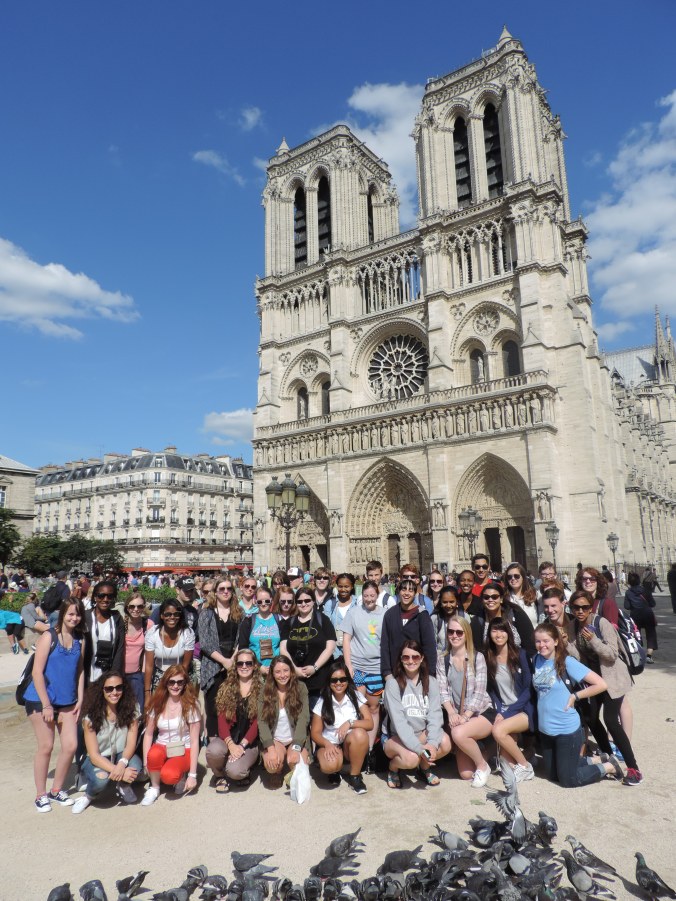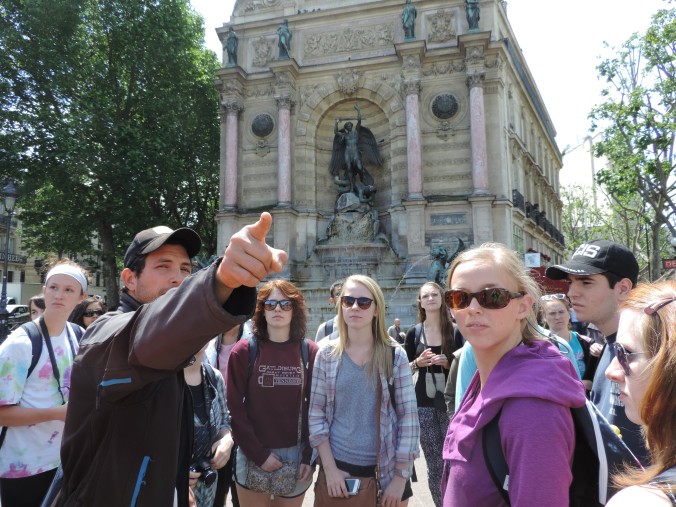Train time! I’m watching the rolling hills of the French countryside rush past the windows as we roll along to Barcelona. It’s gratifying to see that France really does look the way it does in the television coverage of the Tour de France– small villages punctuated by stone churches which are probably older than the United States, patchwork farms, and the odd chateau off in the distance.* Also, the odd nuclear reactor– Ms. Hopp and Ms. Johnson and I just had a very interesting conversation on the French use of nuclear power, prompted by the reactor we could see off in the distance.** And just at the edge of the horizon, I think I see the faint shape of the Pyrenees.
Since we’ll be on the train until eleven tonight, I think I’ve got enough time to catch up on this blog, so. Back to Versailles!
It was in the low eighties on Friday, and a clear blue sunny sky– which was very pleasant when the wind was blowing, but could be quite warm if one stood out in the sun for too long. This meant that exploring the palace gardens was a little sweatier than most of us would have liked. Still, it was beautiful– impeccably manicured, with a long lawn bordered by tree lined avenues parading down to a bronze fountain of Neptune with his hippocampi rising out of the water.*** It was easy to imagine the men and women of the court strolling slowly up and down the grounds in silks and lace during the reign of Louis XIV. It was also distressing to think of how many peasants and craftsmen and artisans must have labored for so long, and for so very little, in order to create an environment of luxury for the first estate.
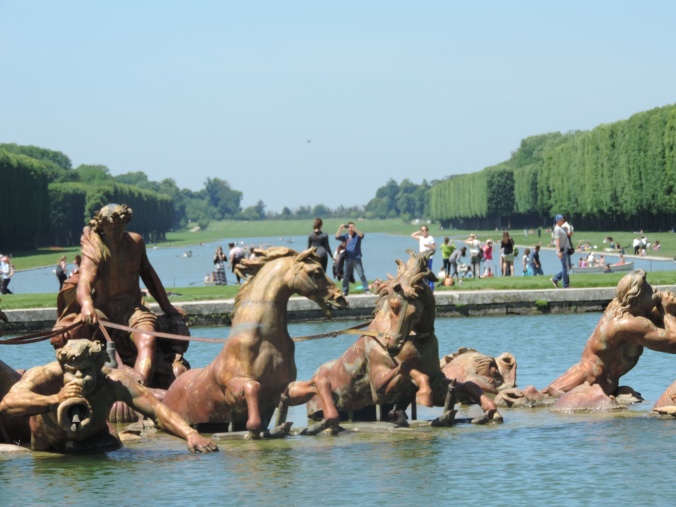
Neptune and his water horses.
Once inside, we put on our headsets and listened to our guide as she explained the purpose of each room, and the significance of the art. It was very, very crowded, but I think the grandeur and overt display of wealth and power was still evident to the kids, even as they waited to squeeze between sweaty tourists from Japan and Spain and Britain and a good handful of our fellow Americans. Evangeline, our tour guide, provided some really awesome commentary about the things we saw, too– when we were in Marie Antoinette’s bedroom, for example, she explained how the queen of France was expected to give birth in public, in order to make sure there were no questions about the succession! (Granted, she was usually behind a screen, but still. How invasive and uncomfortable that must have been.) We also saw the table on which the Treaty of Versailles from 1919 (the one that ended World War I, and in many ways was responsible for the start of World War II) was signed. That made this history teacher very, very happy. It’s possible I took several pictures.
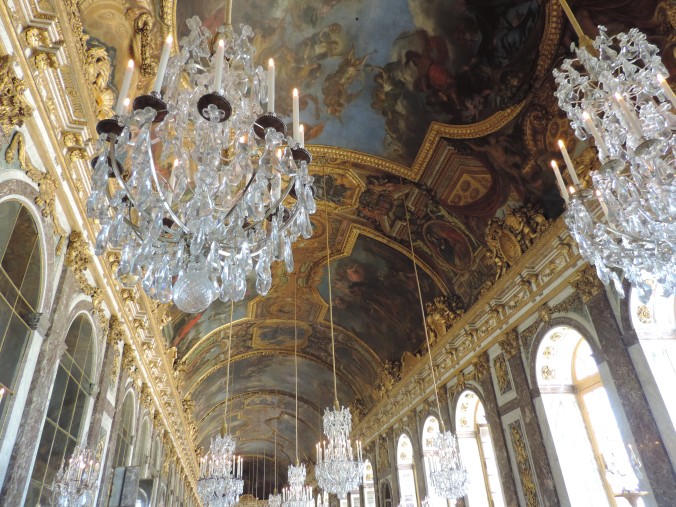
The hall of mirrors in Versailles.
After our tours, we met back up at the grand gates at the front of the palace, got back on the bus, and rejoined our compatriots back in Paris.
(Unrelated to our story, but Ms. Johnson just spoke to two young ladies in our train car who wanted to know where this train was going. When she said Barcelona, they became very distressed– they’d evidently got onto the wrong train! How awful for them. They’ll have to wait until the next station, and see what they can do from there.)
After picking up Mr. Auld and Ms. Rankenburg’s group, we visited the Pantheon, a replica of the Roman temple which serves as the burial site for many of France’s great writers, philosophers, and other luminaries. We saw the tombs of Jean Jacques Rousseau (political philosopher), Voltaire (satirist, political philosopher), Alexandre Dumas (author of “The Three Musketeers,” etc), Emile Zola (author), Victor Hugo (author of “Les Miserables, etc.), Marie and Pierre Curie (Nobel Prize winning scientists and generally awesome people), and memorials to historical figures like Toussaint L’Overture (leader of the Haitian Revolution). Honestly, the Pantheon was far cooler than any of us had anticipated– I think we would have enjoyed spending several hours there.
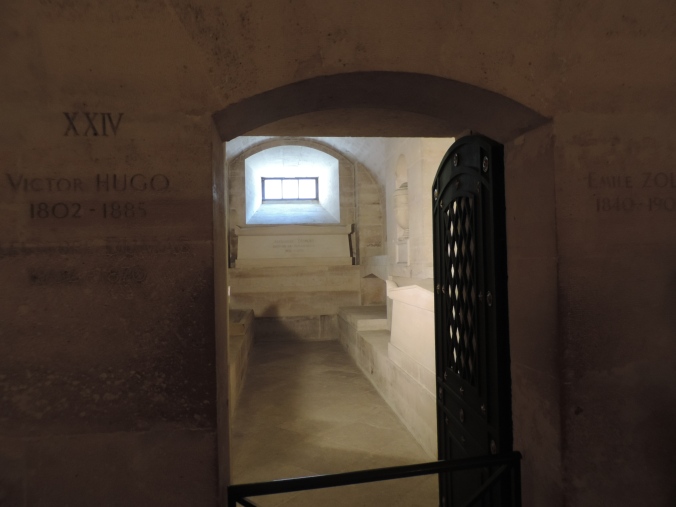
Tombs of Victor Hugo, Emile Zola, and Alexandre Dumas.
From the Pantheon we walked to the Luxemburg Gardens, and then to dinner– which was extremely welcome by that point, because we were all definitely tired, hungry, and more than a little footsore. After having eaten a dinner of pot roast, salad, potatoes, and a desert of napoleons, we made our way via the Metro back to the bank of the river Seine for our evening river cruise. We spent an hour on the Seine, cruising slowly under the many bridges that cross it and waving to the people sitting along the banks. The sun doesn’t set until around ten right now, so we were onboard during the sunset, which was absolutely lovely. I think we all got some good pictures.

The Alexander III Bridge at twilight.
After our boat tour, we walked over to the Eiffel Tower for an eleven o’clock appointment, and road the elevators up to the second observation level. The wind was remarkably strong up that high, and the lights of Paris were beautiful. We spent about an hour on the Tower, spotting the various sites we’d visited, and others we’d visit soon, like Sacre Coer and the Arc de Triomphe. It was almost midnight by the time we left, but alas! Our bus had not come as it was supposed to, so we had to wait another half an hour before the bus arrived and we could go home. (Our tour guide, Juanito, was extremely frustrated by the bus problems– he assures us that this shouldn’t happen in Spain.) We finally arrived back at our hotel around 1:45 in the morning– tired, sore, and ready to collapse.
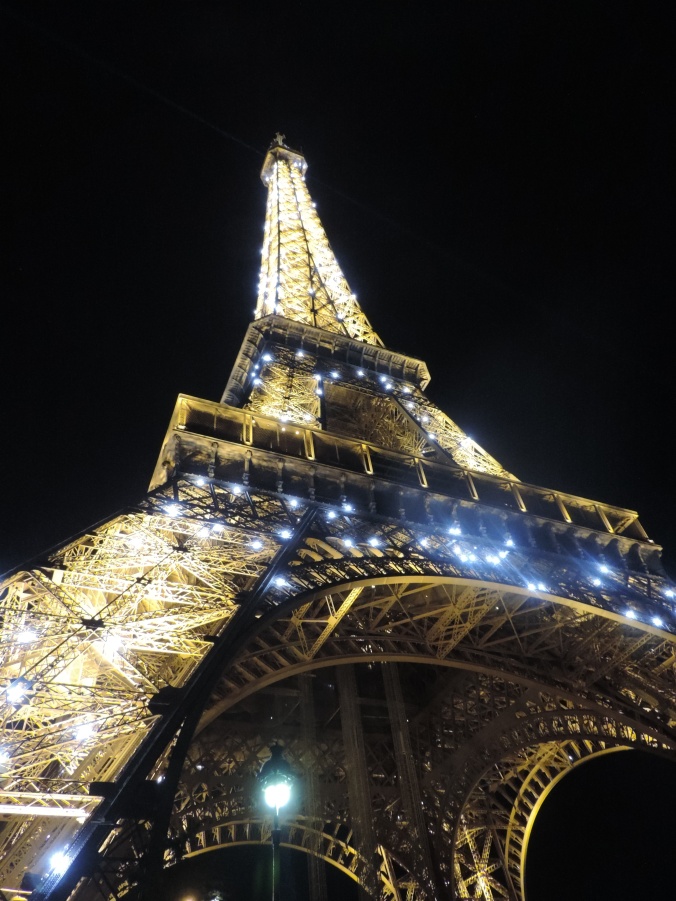
The Eiffel Tower at night.
The next morning (or rather, the same morning, just later…), we got up a couple of hours later than we had planned out of deference to our very late bedtime, and then took the RER and metro into the city to go and visit Sacre Coer and the Montmartre neighborhood. As someone who has seen “Amelie” a huge number of times, I was personally quite excited to go and see the places I’m so familiar with on film. I think I knew on an intellectual level that Montmartre was on a hill, but after climbing two extremely long and extremely steep staircases to reach the church– I can now say that I know it in my bones. And muscles. And lungs. It had also just rained a few minutes before, so it was thick and humid and sticky, so– not too pleasant for climbing a mountain.
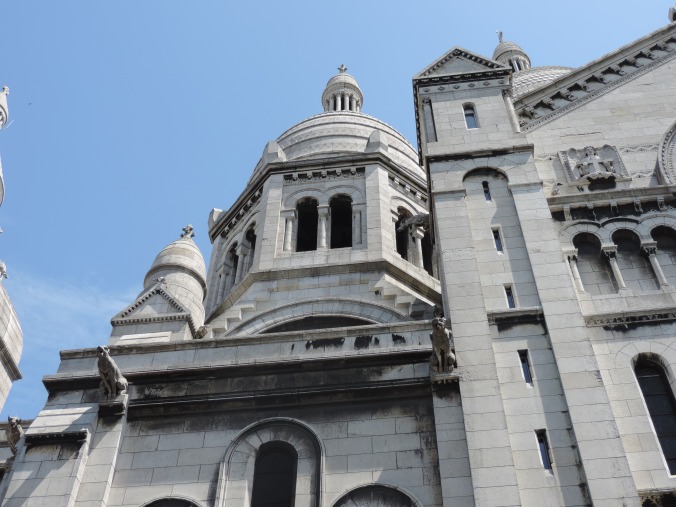
Detail of Sacre Coer.
But once we reached the top– ah. A panoramic view of Paris, a beautiful white church with graceful domes, and an artist market. We gave the kids a couple of hours to grab some lunch and explore the area, and I have to say that we probably could have spent three times that much time in Montmartre and not have seen everything. The chaperons and I went to a nice little cafe, where we had a great meal of madame croquets (fried toast with ham and cheese and a fried egg), and then perused the artist market. Given that it was a Saturday, the area was incredibly, incredibly crowded– but the art was worth it. There were some fairly traditional paintings of Paris street scenes, impressionistic views of the Seine, and some pieces which were obviously projects that the artist had completed for love of the work, rather than for its potential monetary value. My favorite of those was a mixed media piece with a grey wash over the canvass and two grey three dimensional snail figures, oozing their way over the granulated surface of the piece. I don’t know where I would have hung something like that, but it was pretty cool.

Street artist in Montmartre.
After lunch and shopping at Montmartre, we took the Metro (again– yesterday we rode the Metro five separate time, and took an average of two trains each time. So we rode something like eleven trains yesterday) and briefly visited the Opera building. Then we walked a few (very hot!) blocks to the museum for Fragonard, a perfumerie. We had a tour of the museum, and learned a little bit about the history of French perfume and tried our hand (nose?) at identifying base scents. The kids were starting to drop by then, however, and the problem was compounded by an unfriendly security guard who didn’t like it when the students tried to sit down on a shady part of the ground in the courtyard outside while we waited for the rest of our group to finish buying any perfumes they liked.**** But we rallied, and made our way to dinner.
Dinner was delicious. A sort of French twist on pizza, we had endless flatbreads with a creamy cheese sprinkled with various toppings– ham, mushrooms, beef– and then, even dessert pizzas! Who knew cheese and chocolate was so delicious in combination?
After dinner, we braced ourselves for another long series of transfers on the Metro before we returned to the hotel, but– miracles of miracles, we were able to jump right on the RER from the nearest Metro station, and so were home by eight in the evening. An excellent thing, because the kids needed to pack up their belongings and get ready for the next segment of our adventure: Barcelona.
This morning, we were up and out of the hotel by eight, and at the Louvre by nine. We only had two hours in the museum– apparently it would take four months of twenty-four hours’ constant touring in order to see everything– but I think everyone enjoyed their visit, even if they only saw 0.0004 of the museum’s collection. I know there were quite a few selfies taken in front of the Mona Lisa, and several students made a point of hunting down Hammurabi’s code and the Venus di Milo. For myself, I decided to focus on the Islamic art collection, which was fantastic– lots of examples of material culture in the form of glassware, enameled metal pieces, and beautiful, beautiful mosaics.
Following our excursion at the Louvre, we trekked back to the St. Michel fountain we saw for the first time on Thursday, and had lunch at a nice little restaurant in the Latin Quarter. Then, we made our way to the train station– we got there with a good hour to wait before the train, which was actually probably a good thing, as it meant that we wouldn’t be frantically dashing for the train with fifty-odd people.
So! That brings us to the present, finally. Tomorrow we’ll begin our exploration of Barcelona, and I really cannot wait.
—
* Fewer guys riding in spandex, however. The Tour doesn’t start until the end of June, sadly, if any of you are cycling fans. Which is probably, like, two of you.
** Did you know that eighty percent of French electricity is generated through nuclear power? And that the French are allowed to recycle their nuclear waste, which is illegal in the US? I didn’t. Ms. Hopp is a fountain of knowledge.
*** Hippocampus in the “horses of the sea” sense. Neptune was not riding behind a chariot pull by parts of the human brain.
**** I noticed that we were a very pleasant smelling group this morning, by the way. I don’t think that was coincidental.
